What do managers even do now?
We’re agile, so what do managers event do now?
“I don’t really even know what my job is anymore,” Marco told me. “I was promoted to development manager because I was good at organizing and leading the work. Now that we’re ‘agile,’ I’m not supposed to be an expert on anything. I’m apparently just supposed to ask questions. But that’s not much of a job.”
Our understanding of the role of management was strongly influenced by someone almost no one outside of business schools has heard of: Henri Fayol. Way back in the early 20th century, Fayol described management as having five functions: planning, organizing, command, coordination, and control. In other words, managers primarily direct and oversee the work their employees do. They’re the chessmaster. And Fayol’s definition of management stuck.
Marco had embraced this traditional definition of the role. He used his expertise to get his team the right skills, to plan and organize the work, to make sure everyone was doing the right tasks at the right times. His bosses could count on him to always know what was going on and ultimately, to get projects done on time.
Enter Agile Software Development. Marco’s organization adopted Scrum. Scrum, like most Agile methods, distributes much of the traditional manager’s job across several other roles. The Product Owner organizes and prioritizes work. The ScrumMaster facilitates team coordination and improvement. Developers (i.e. the people who build the product) do much of the planning and technical decision-making.
With most of his day-to-day responsibilities given over to others, Marco was left with hard-to-apply platitudes from the Agile community: “You’re no longer a manager—you’re a leader now.” “You need to be a coach and servant leader for the team.” ”You just need to remove impediments”
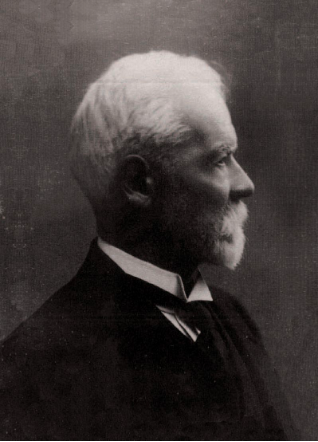
Searching for answers online told him pretty much the same thing.
The result from Marco’s perspective? “I don’t really even know what my job is anymore.”
We need a modern definition of the role, because there are certain things empowered teams need in order to be effective.
The Manager Role in Agile is Different
One manager directing the work of a whole team was inefficient, at best. Moving decisions about the work closer to work itself makes sense. Teams can leverage the experience, knowledge, and skill of everyone on the team and take advantage of the faster cycles that are possible when a team self-organizes around complex work.
In other words, taking the many jobs a manager used to do and giving them to Product Owners, ScrumMasters, and developers is a good move.
But we shouldn’t make the mistake of thinking there’s nothing valuable for the manager to do now. Rather, the manager in an agile context is freed to contribute in new ways.
The Approach is Bigger than Agile
Agile is one approach that seeks to move decision making to the people executing the work. Many modern companies have recognized the benefit of such a move, even if they aren’t using techniques directly related to the Agile movement. Marco could exist in many organizations seeking to empower teams and individuals, whether they’re doing something they call Agile or not. For all of these managers, we need a modern definition of the role, because there are certain things empowered teams need in order to be effective.
What About Self-Managing Organizations?
There are lots of great examples of organizations using traditional management structures while still effectively empowering teams. There is also an ever-growing number of organizations that remove the job title and structure of managers from the organization completely. Morning Star, Buurtzorg, Geonetric, Valve, and many others have proven that this can be done and done well.
Even in those organizations, the jobs of management still need to happen, and organizations must still figure out how to distribute those jobs among the people doing the work. If you are part of, starting, or are considering moving towards an organization like this, the Agile Management model below will help you understand what management jobs need to be distributed.
The Three Jobs of Agile Management
Agile managers support and enable self-organizing, high-performing teams. How? By doing three jobs, each of which has a human side and an objective side:
1
Create Clarity
What are we trying to do together and what does success look like?
2
Increase Capability
How can we maximize the resources we can apply towards that end?
3
Improve the System
How can we apply that capability towards that end more and more effectively?
Here’s an illustration of those three jobs with several focus areas under each one:
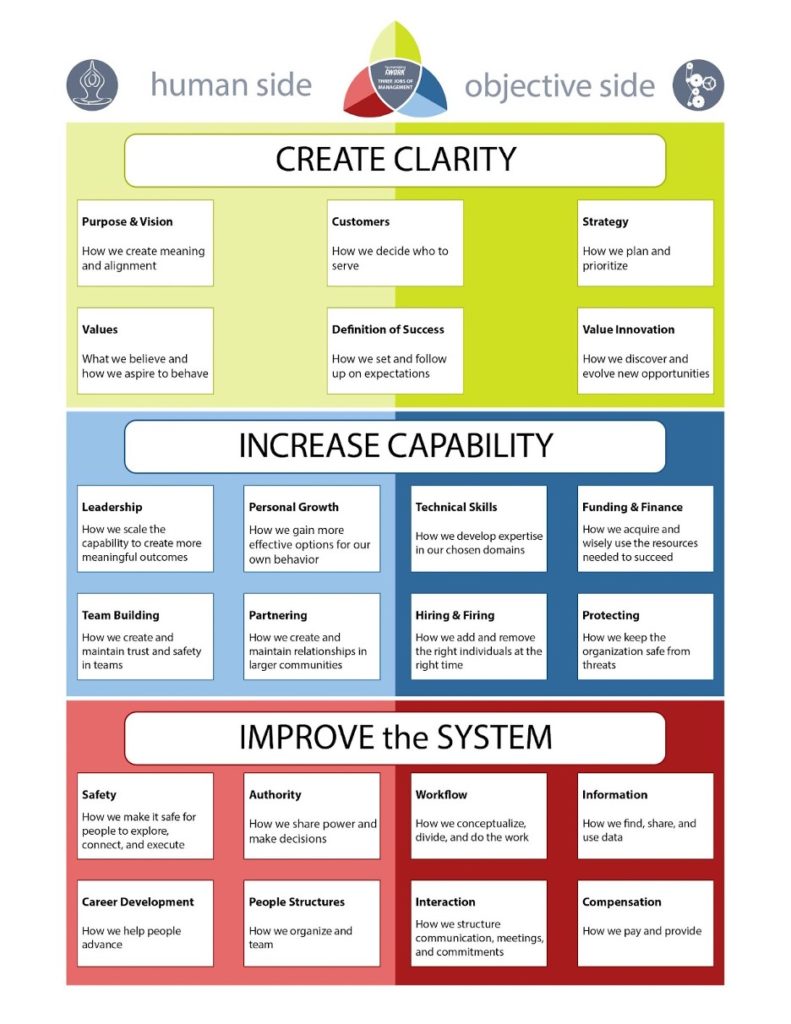
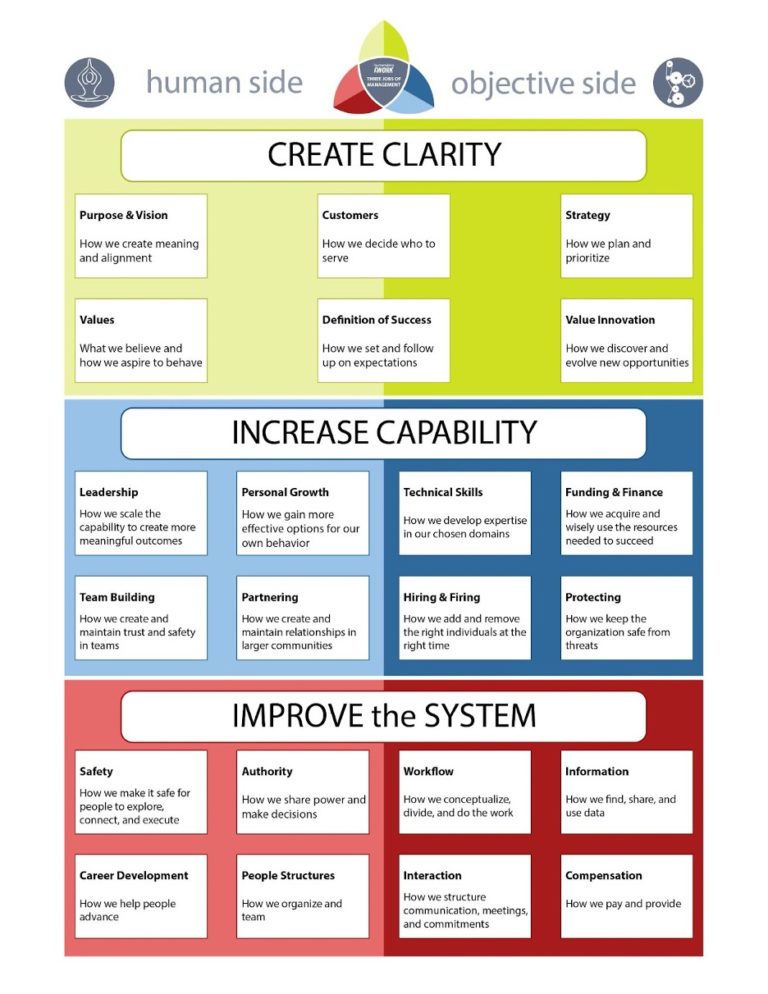
1
Create Clarity
What are we trying to do together and what does success look like?
2
Increase Capability
How can we maximize the resources we can apply towards that end?
3
Improve the System
How can we apply that capability towards that end more and more effectively?
On any given day, a particular manager may focus on just a few of these, but together these generate a sort of “management backlog” that orients the new day-to-day work of the agile manager.
On any given day, a particular manager may focus on just a few of these, but together these generate a sort of “management backlog” that orients the new day-to-day work of the agile manager.
New Skills Required
A manager who’s used to being the expert on the work, who’s used to directing the details of the work for a team, can feel out of their depth looking at this list of focus areas. Agile management really is a different job.
For example…
- A manager who’s used to being the expert on the work, who’s used to directing the details of the work for a team, can feel out of their depth looking at this list of focus areas. Agile management really is a different job.
- Facilitating great team meetings, the kind where the team discovers something new and comes to an aligned outcome
- Setting goals and following through with accountability, but without micromanaging
- Communicating effectively with other managers and stakeholders
I want more.
I’m ready to be a different kind of manager.
Nah, I’m cool where I am.
© Copyright 2022. All Rights Reserved